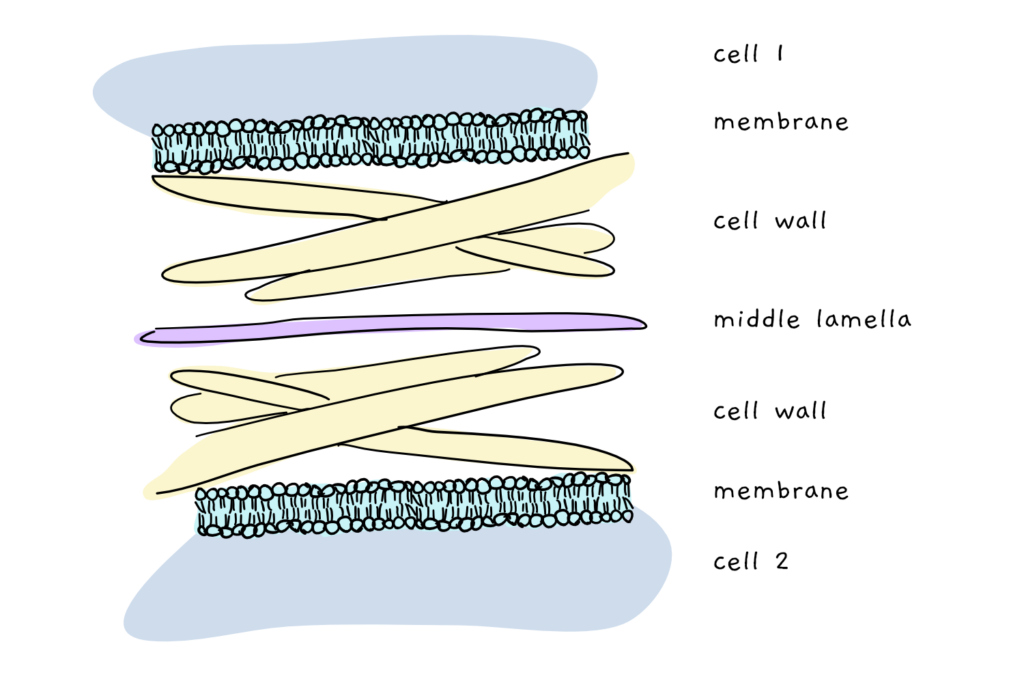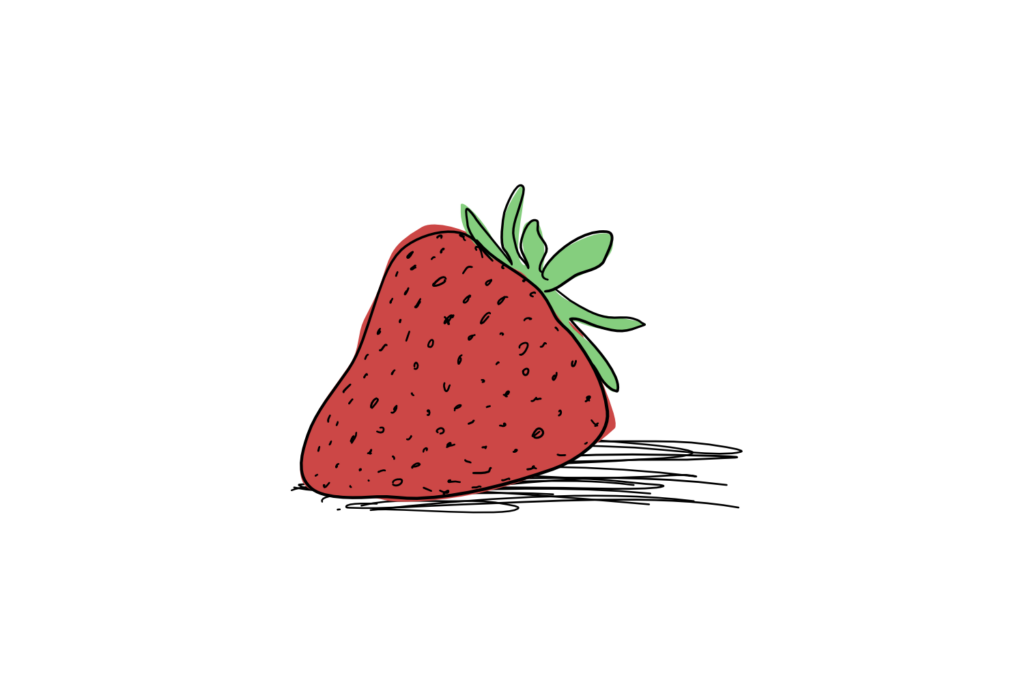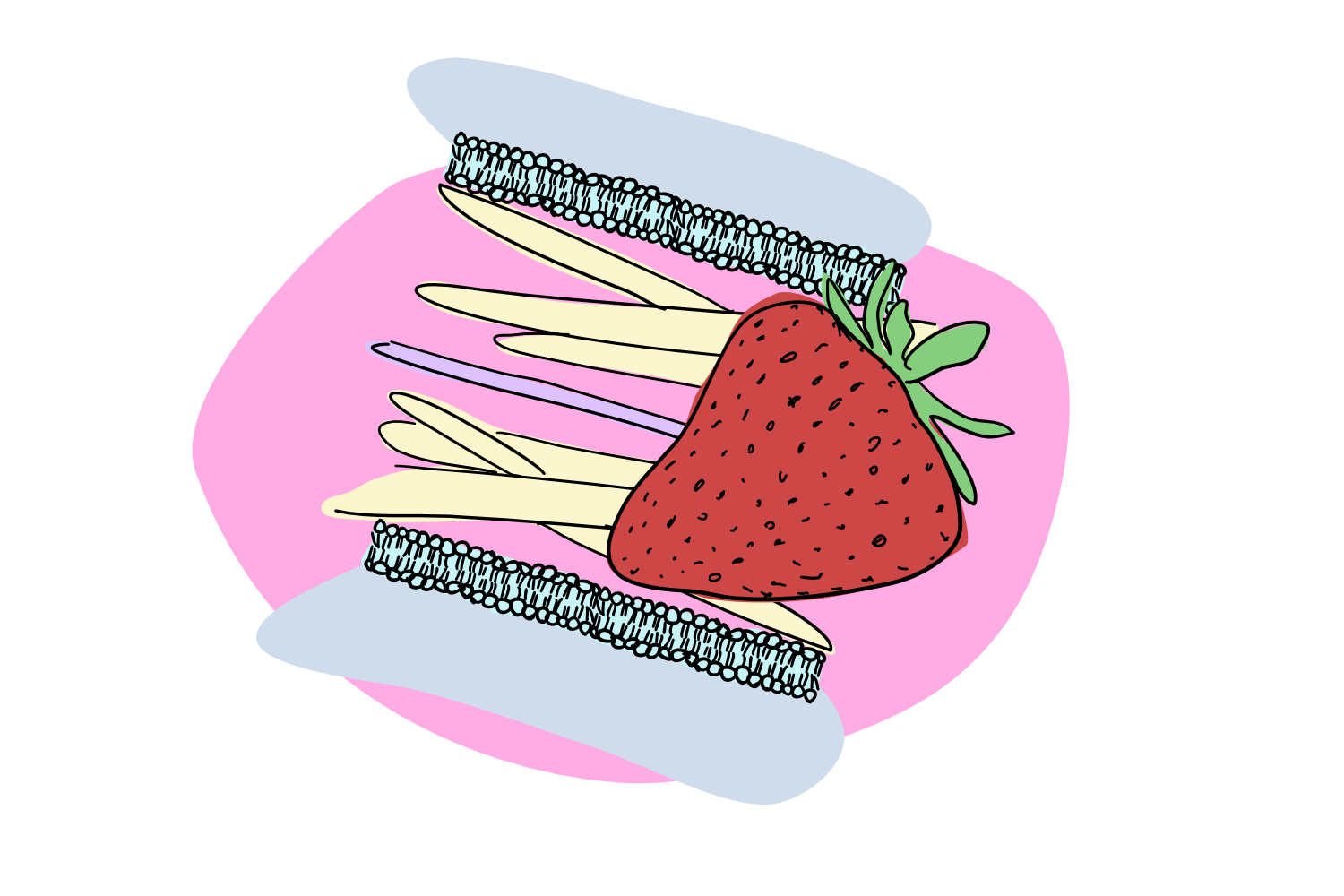During these cold winter months I long for the sensation of biting into a ripe peach or a deliciously soft strawberry. It is possible to get my hands on some fruit now, however, they are certainly not as mouth-watering as in summer. They are hard, and sour and make me miserable.
It would be great if we could make the fruit go soft at will in winter. We can’t just pick it when it is ripest, as there is a good reason why the fruit is harvested when it is hard. It is much easier to package and even transport (sometimes across the world) a firm peach than one that can barely hold it together. Fruit that goes squishy too early is a major reason for post-harvest food losses.
So, we kinda want the best of both worlds: we need to transport fruit from the field to the consumer without destroying it or using excessive packaging material, and we want the fruit to be soft and juicy when we actually consume it. Timing the transition from hard to soft, or, even better, controlling it, is hard.
Fruit softening is a complex process. For the plant itself, a strong, rigid structure is an advantage while the fruit is developing. After all, you don’t want your seeds to be attacked by birds or insects before the seeds are fully mature. To stay tough, the plant uses two mechanisms: the cell turgor and the cell wall.
Turgor is the internal pressure that is mostly controlled by the amount of water inside any given cell. You can do an easy experiment at home: stop watering your basil for a couple of days and watch it go all limp and sad. The cells themselves haven’t changed a lot in that time, but the internal water pressure has. Without it, the plant cells behave like a half inflated balloon and just sadly hang in there. As soon as you re-water the basil, it will visibly spring back to life, rebuilding the turgor and standing up tall – until you pluck it apart to garnish your pasta.
The other major player in plant cell rigidity is the cell wall. While animal cells are just squishy blobs surrounded by a membrane, plant cells add a strong wall to give them structure that withstands the turgor. If you look at the border between two cells, you’ll find a sort of structural sandwich: a fine layer, the middle lamella, separates the two cell walls. The lamella acts as a glue that sticks both cell walls together and stops them from sliding past each other.

The cell walls and the middle lamella are made from specialised sugars – although I prefer the term carbohydrates. These carbohydrates are connected, modified and branched to form a network with very specific properties. Cell walls can be hard and tough but also pliable and flexible, depending on the way the carbohydrates are attached to one another. In the cell wall, you’ll find cellulose as one of the more prominent carbohydrates, while the middle lamella consists of a type of pectin, called homo-galacturonan.
As you might imagine, a whole number of enzymes are involved in building the wall and tearing it back down. These enzymes are the key to understand and possibly even control the behaviour of the cell wall – and therefore the hardness of a fruit. Especially the presence or absence of the middle lamella – the glue between the cells – is what defines softness. Two main classes of enzymes are involved in breaking the middle lamella down: endo-polygalacturonase (PG) and pectate-lyase (PL).
For PL, researchers could quickly show how it is involved in the process of fruit softening. Knocking its gene out resulted in harder fruit. For PG, however, the story is not so simple. Depending on which fruit the researchers investigated, they found different effects of a PG knockout. In tomato, a broken PG gene hardly affected the firmness, in peach, on the other hand, a loss of PG meant a loss of peachy softness.
Now, Candelas Paniagua and their colleagues turned to strawberry to learn more about the role of PG. In strawberry, Fragaria×ananassa, there are at least two genes encoding for PG enzymes: FaPG1 and FaPG2. The researchers created individual knockouts and also a plant line that had neither of the two PG genes. They found that strawberries without either FaPG1 or FaPG2 were firmer than their unaffected relatives, but the effect of firmer fruit did not increase when both knockouts were combined. What does that mean?

Imagine you want to tear down some wooden panels on a wall. To do the job, you need pliers and a crowbar. Each tool has a specific function in the process of tearing down the panels. If I take either the pliers or the crowbar away, you might be able to do part of the job, but you won’t succeed in actually removing the panels. Of course, if I take away both your tools, the wooden panels will also remain.
For FaPG1 and FaPG2 that means that they act like two separate tools for the same job. Both need to be present to soften the fruit, and taking either one away results in the inability to break down the middle lamella. Paniagua and colleagues could clearly show that PG are indeed involved in fruit softening. On top of that, they also found hints that the cell is able to sense the state of the cell wall, potentially through the presence of breakdown fragments from the cell wall that trigger feedback signals. Some of these signals might lead to a loss of cell turgor – which would soften the fruit even beyond what would be possible if only the middle lamella was lost.
With that knowledge, it might be possible to use transgenic or conventional breeding approaches to control the activity of PG enzymes. If we could slow them down, we might get strawberries that stay firm and transportable for a bit longer, extending their shelf life and reducing food waste. If we could tune it to about 6 to 8 months, that would be perfect, because then I could have some strawberries now, in January.
References
Candelas Paniagua, Pablo Ric-Varas, Juan A García-Gago, Gloria López-Casado, Rosario Blanco-Portales, Juan Muñoz-Blanco, Julia Schückel, J Paul Knox, Antonio J Matas, Miguel A Quesada, Sara Posé, José A Mercado, Elucidating the role of polygalacturonase genes in strawberry fruit softening, Journal of Experimental Botany, Volume 71, Issue 22, 31 December 2020, Pages 7103–7117
David A Brummell, Sensing when the wall comes tumbling down, Journal of Experimental Botany, Volume 71, Issue 22, 31 December 2020, Pages 6865–6868
